Military Leadership
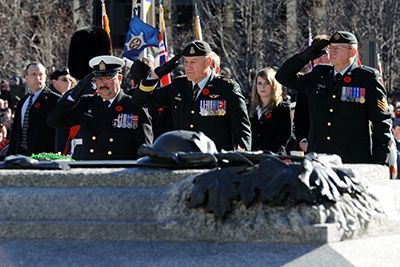
DND photo GG2010-0672-024 by Sergeant Serge Gouin
Canadian Forces Chief Warrant Officer, Petty Officer First Class Robert Cléroux and Chief of the Defence Staff, General Walter Natynczyk, lay a wreath at the Remembrance Day ceremony, 11 November 2010.
The Command Team: A Valuable Evolution or Doctrinal Danger?
by Alan Okros
For more information on accessing this file, please visit our help page.
Captain (N) [ret’d] Alan Okros, OMM, CD, PhD, is the Deputy Director Academics at the Canadian Forces College, where he teaches Leadership and Command. He was responsible for the teams that developed Duty with Honour: The Profession of Arms in Canada and Leadership in the Canadian Forces: Conceptual Foundations. He continues to conduct scholarly work on military leadership, and he lectures on this subject in Canada and at a number of international professional military education centres.
Introduction
In order to ensure effectiveness in operations, the military relies upon cohesive small teams that are highly motivated to accomplish specific tasks. To generate this capacity, the Canadian Forces (CF) expects those in positions of responsibility to exercise command and leadership. Simplistically, command provides the structures, and leadership provides the motivations which, together, shape operational effectiveness. Thus, the concepts of leadership, command and teams are integral to how the military functions. A corollary is that the CF must ensure consistency and clarity in how key concepts and leader responsibilities are understood and put into practice.
In recent years, a concept which has moved from isolated reference to common usage and now formal definition is the ‘Command Team,’ which has been presented in Beyond Transformation: The CPO1/CWO Strategic Employment Model (hereafter, the CWO Model) as follows:
The CF Command Team construct is generally defined as “… a distinguishable set of two or more people who entered, dynamically, interdependently and adaptively toward a common and valued goal / objective / mission, who have been assigned specific roles or functions to perform and who have a limited life-span of membership.”1
Subsequent amplification in this document states that the Command Team “… is widely accepted as the combination of a Commander and CPO1 or CWO,” and explains that, while the Command Team is to be understood as applicable at the tactical and operational levels, at the strategic level “… the Command Team evolves into a Senior Leadership Team.”2
This articulation of the Command Team as the combination of a Commander and CPO1 or CWO can be linked to previous CF analyses and strategic guidance, and, in particular, considerations of the evolving role of the NCM cadre. However, a challenge in these statements is that, while the CF has endorsed a new concept, the Command Team, and has expanded the role of senior NCMs, what has been described is a conflation of leadership with command, and a blurring of the roles and responsibilities of appointed officers and CWOs. Failure to clearly articulate how the ‘Command Team’ is to be understood, and to ensure consistency with current definitions of leadership and command, can be professionally confusing and ultimately doctrinally dangerous.
This article is concurrently a strong endorsement of the intent of the CPO1/CWO Strategic Employment Model (henceforth, for simplicity, the CWO Model), but also a critique in that the language used is incorrect. This argument will be developed by working from evolution in the roles of the Officer and NCM Corps through understandings of leadership and command, to the implications of the Command Team, with suggestions to address the doctrinal conflicts.
Officer-NCM Roles and Relationships
At one level, nothing has been more enduring in the organization and functioning of the military than the concept of an officer and NCM cadre. However, the relative roles and the inter-relationships between officers and non-officers continue to evolve based upon changes in military requirements, and in broader society. Importantly, although it is common for most armed forces to be seen as professions, the dominant view in many nations has been that it is the officers who are the professionals, and that ‘non-officers’ are not. The influential conservative American political scientist Samuel Huntington’s differentiation in the US military stated:
The enlisted personnel have neither the intellectual skills nor the professional responsibility of the officer. They are specialists in the application of violence not the management of violence. Their vocation is a trade not a profession.3
At a June 1999 symposium on non-commissioned officers in the Canadian Army, a CF colonel echoed Huntington’s philosophy by arguing that the officers were the ‘thinkers,’ and NCMs the ‘doers.’4
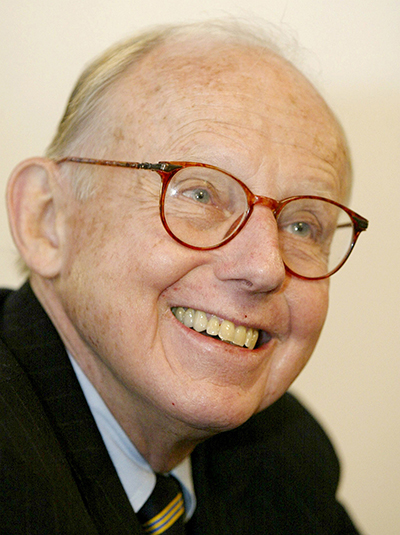
Reuters RTR8PLK by Claudia Daut
Harvard Professor Samuel Huntington during an interview with Reuters in Chile, 7 August 2002.
This desire to retain traditional roles was, however, being rejected as the CF recognized the requirement for significant evolutions to ensure success in future missions. In fact, June 1999 also saw the formal acknowledgement in Defence Strategy 2020 that the CF needed to undertake significant strategic change initiatives, including the generalized theme of innovation, to ensure that each member of the CF could make the maximum contribution to CF effectiveness.5 The application of this broad departmental strategy for NCMs was articulated in 2003 in NCM Corps 2020, with Strategic Objectives which emphasized professionalism, intellectual skills, leadership capacity, and a strong Officer/NCM team. These were subsequently reflected in the doctrinal publication Duty with Honour, which clearly rejected the Huntingtonian view by stating that all members of the CF, regardless of rank, are members of the profession of arms.6 Further, this publication forecast:
“The old paradigm that emphasized the decision-making role of the officer and the applied, technical role of the NCM will likely shift. ... Authority will be increasingly delegated and an even greater degree of responsibility assigned to NCOs and warrant officers to permit the officer/NCM team to dominate the operational theatre across great distances of time and space. In some cases, officers, NCOs and warrant officers may share these authorities and responsibilities; i.e., some roles will increasingly overlap.”7
To a large extent, from Defence Strategy 2020, through NCM Corps 2020, to Duty with Honour, the CF had clearly articulated the requirement for a significant shift in the role and status of the NCM Corps, and in the increased overlap of officer and NCM responsibilities. In doing so, however, the references to Officer/NCM teams, and the requirements to enhance NCM leadership capacity, appear to have morphed into the articulation of an Officer-CWO Command Team. To understand the potential doctrinal difficulties that have been created, it is necessary to review how leadership and command are understood and practiced.
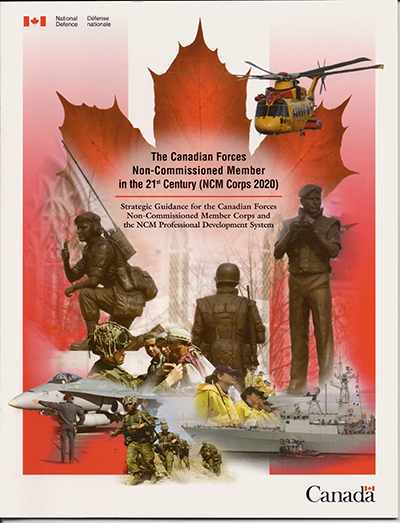
DND
Cover of NCM Corps 2020.
Leadership
The concept of leadership is generally well articulated in the academic and professional military literatures. Conceptually, leadership is best understood as a form of social influence. Within a work context, the basis of social influence is seen as being some form of personal power and position power.
Thus, organizational leadership can be understood as the purposeful use of individually-acquired personal power and organizationally-conferred position power to influence others to achieve goals valued by the organization. When applied to the CF, the definition of effective military leadership is presented in Conceptual Foundations as:
“Directing, motivating, and enabling others to accomplish the mission professionally and ethically, while developing or improving capabilities that contribute to mission success.”8
The reference to ‘developing or improving capabilities that contribute to mission success’ leads to the differentiation between Leading People and Leading the Institution. The focus of leading people is on developing individuals as members of teams and ensuring that they accomplish assigned tasks, while the focus of leading the institution is attending to broader, system-wide responsibilities, so as to set the conditions for small team success. An important differentiation between the two is that leading people is very much focused upon influencing one’s own subordinates and teams. Thus, leadership is mainly exercised ‘down and in.’ Leading the institution, on the other hand, addresses inter-related domains, and often involves exercising leadership ‘across, up and out,’ including into the societal and political arenas in which the profession of arms must function.9
The articulation of two foci of leadership also reflects a shift away from the earlier CF perspective that leadership is best differentiated as strategic, operational, and tactical. Further, leading the institution places a greater emphasis upon facets of longer range, pan-organizational leadership with, importantly, the understanding that this function is not restricted solely to the purview of the most senior General and Flag Officers (GO/FO). The very clear intent of the CWO Model publication is to provide Chief of the Defence Staff (CDS) direction to confirm that the most senior CWOs are expected to make a significant contribution to leading the institution, and much of this document presents the career development implications of providing the path to success for senior appointment CWOs.
Integrated in leading the institution is the requirement for military leaders to pay increased attention to aligning their internal practices and culture with the expectations of the citizenry.10 As described in Duty with Honour, the profession of arms must attend to both functional and societal imperatives. Simply stated, leaders must achieve the objectives assigned by the government of the day, but in a manner that retains public confidence and support. A further complication is that there are significant differences between the private and public sectors, and between the civilian public service and the military.11 Particularly in the context of the leading the institution domain, some of these factors are of importance when military leaders need to determine what they are to achieve when influencing others.
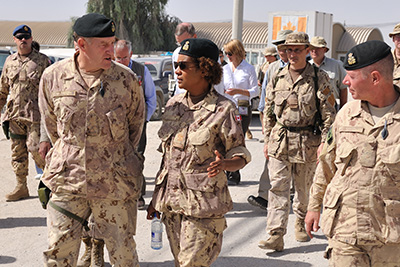
DND photo GG2009-0359-003 by Sergeant Serge Gouin.
General Walter Natynczyk, Governor General Michaëlle Jean, and Canadian Forces Chief Warrant Officer Greg Lacroix in Kandahar, Afghanistan, 8 September 2009.
While military leadership must always ‘get the job done,’ the CF must, in fact, have the potential to get a number of very different jobs done, occasionally with limited advanced warning from government, and often with a high degree of risk. This requires that leaders generate flexibility, adaptability, and resilience. Additionally, as the government is the guardian of the social good, and must answer to the ‘people’ for the use of public resources, there is a greater emphasis placed upon accountability. Due to this emphasis, the bureaucratic ideology values efficiency over effectiveness,while the professional ideology does the reverse.12 Further, the Federal Government has undertaken to ensure that the government workforce proportionately represents key Canadian demographics, and that workplace practices be aligned with certain social values. This philosophy is illustrated in the concept that the military must reflect the society it serves.
As articulated in the Conceptual Foundations, the key functions of leadership, hence, of the leaders, is to achieve an appropriate balance across a range of competing outcome and conduct values. These were developed by incorporating the views of an authority on the subject, the University of Michigan Professor Robert Quinn’s organizational behaviour research on competing (outcome) values,13 and the Duty with Honour framework of professional and ethical (conduct) values, to produce the Canadian Forces Effectiveness Framework highlighted below.
This framework highlights that leaders must attend to tensions amongst competing outcome (what should we focus on doing) and conduct (how should we do it) values. Further, this framework also extends the consequences of leader influence beyond the confines of the military to recognizing that leaders at all levels can influence second order outcomes such as public and political confidence, trust and support for the institution.14
This summary of the CF approach to leadership demonstrates that, while leadership is still seen as an influence process, and that much of the traditional focus of military leadership remains focused upon ensuring that small teams achieve mission objectives, the 2003 doctrinal framework serves to expand the nature and scope of leadership from a predominant focus upon ‘down and in,’ to also incorporate the requirements to influence ‘across, up and out,’ including movement into the political and societal domains in which the profession of arms must function. To a large extent, the strategic objectives articulated in NCM Corps 2020 and now the CWO Model publications are intended to ensure that all members of the CF, and, in particular, those CPO1/CWOs selected for senior appointments, are prepared, empowered, and supported in taking on the full range of leader responsibilities.
There is, however, one clear source of confusion introduced in the CWO Model. The adoption of Leading People vs. Leading the Institution, and, more specifically, the rejection of the idea that there should be three types of leadership to align with the tactical, operational, and strategic levels, leads to an obvious doctrinal conflict with the CWO Model articulation, which states, “… there are three defined leadership levels within the CF: tactical, operational, and strategic.”15 The more accurate statement is that there are three levels at which military activities are organized and controlled. Hence, these levels apply to command, not leadership. The following section will examine the nature of command to explain the differentiation between the two, and, in doing so, will highlight the fundamental doctrinal issues with the Command Team construct.
Command
Although command is central to how the military functions, has a strong legal basis, and is prominent in the military lexicon and doctrine, it tends to become a somewhat confused concept.16 References to command can be linked to a function (exercising command), an appointment (being the Commander) or a process (command decision making). Further, the processes of exercising command are often seen as being conducted by a Commander and staff. Additionally, descriptions of the responsibilities and activities of commanders often conflate command with leadership and/or management. Those holding staff appointments often refer to their positions as being in command particularly when the CF has applied the title Commanding Officer as referring to certain legal responsibilities but not extending to command per se. Finally, doctrine and definitions are not clear with command, often confused with control and with Command and Control (C2).17 To a large extent, the articulation of the Command Team in the CWO Model publication reflects the doctrinal and professional confusion surrounding command.
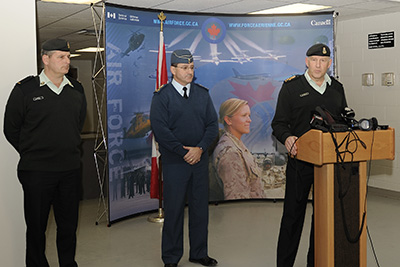
DND photo TN2010-0074-04 by Private Gisèle LeBlanc
The Chief of the Defence Staff, General Walter Natynczyk, Lieutenant-General André Deschamps, Chief of the Air Staff, and Canadian Forces Chief Warrant Officer Greg Lacroix at a media conference at CFB Trenton, 10 February 2010.
The NATO and CF definition of command is “… the authority vested in an individual of the armed forces for the direction, co-ordination, and control of military forces.”18 To expand and clarify further, the function of command can be understood as the activities undertaken by an individual to provide the structure required to apply military capabilities in order to achieve politically mandated objectives in a lawful manner.19 There are several key implications to this phrasing. First, command is vested in an individual, and is based upon formally delegated authority. Second, this delegated authority is derived from law starting with the National Defence Act although other regimes of national and international law apply, depending upon the context. Third, the purpose of command is to provide structure and, in particular, leads to the related concepts of control and C2. Fourth, the reference to politically-mandated objectives means that command is applied in the context of conducting military operations. Conversely, however, as clearly articulated by defence research scientists Ross Pigeau and Carol McCann, only humans command. Their ‘reconceptualization’ of the human in command led to these alternate definitions:
- Command: the creative expression of human will necessary to accomplish the mission;
- Control: those structures and processes devised by command to enable it and to manage risk; and
- C2: the establishment of common intent to achieve coordinated action.20
To extend this understanding of command, CF doctrine describes command as follows:
“Command may also be described in terms of an array of functions associated with an appointment or as a set of activities related to those functions. As functions or activities performed by a military commander, command typically includes, but is not limited to, such things as planning, problem-solving and decision making, organizing, informing, directing and leading, allocating and managing resources, developing, co-ordinating, monitoring, controlling, and so on. But the essence of command is the expression of human will, an idea that is captured in the concept of commander’s intent. Nearly everything a commander does – planning, directing, allocating resources, monitoring – is driven and governed by the commander’s vision, goal, or mission, and the will to realize or attain that vision, goal, or mission. As such, command is the purposeful exercise of authority – over structures, resources, people, and activities.”21
This presentation of command serves to illustrate why the three constructs of command, leadership and management can become conflated. The references to planning, organizing, problem solving, coordinating, controlling and resource management are all classic components of management while the inclusion of developing, directing, and leading, along with the notion of human will, are clearly linked to leadership. Thus, to develop a more complete understanding of command (as a uniquely military construct), it is necessary to consider the inter-relationship of management and leadership in a general organizational context.
An integration of the literatures on public administration, socio-technical systems and sociologist Eliot Freidson’s bureaucratic vs. professional ideologies provides a means to understand the three concepts.22 Organizations function through the integration of formal, structural systems (bureaucracy) and informal, social systems (the human dimensions). The structural systems represent those elements that are intentionally created and assumed to operate on a linear, rational basis to achieve efficiency. These elements include rules sets, standard operating procedures, job descriptions, work plans and, in the military, doctrine and training. The function used to regulate the structural systems in order to achieve efficiency is management, and thus covers standard activities of planning, organizing, and controlling all resources, including capital, equipment, information, and the competencies resident in the workforce. The social systems represent those elements that are emergent and operate on a combination of cognitive and affective bases to achieve those outcomes (ends) using those processes (means) that are valued by the individuals and groups that belong to the social system(s). As a result, organizations can only influence social systems, not control them. Thus, the function used to do so is leadership.
To return to the previous comments that leadership influence can be applied ‘across, out and up’ as much as ‘down and in,’ a key understanding of management can also be multi-direction, but is based upon formal authorities and pertains to specific functions (hence the reference in Defence to ‘functional authorities’).23 As a general concept underlying management, and a specific intent within government bureaucracy, management is intended to be exercised as a form of ‘checks and balances,’ based upon the principle that no one person has unrestricted power over key resource decisions.
This description of management (controlling the structural systems) and leadership (influencing the social systems) is characteristic of many organizations, including government bureaucracies. The exercise of management as the basis of checks and balances leads to inevitable delays in obtaining requisite approvals. However, this is seen as an appropriate restriction in order to ensure due diligence.24 While bureaucratic management can work well in contexts of predictability and stability, this approach becomes less and less effective in more dynamic situations. Hence, the military has drawn upon centuries of experience to create the concept of command, which is seen as a concentration of powers and authorities in one individual that is deemed required under certain circumstances, usually characterized by high risk, a complex environment, and significant time pressures.25 Thus, command is a fusion of authorities and, as such, aspects of both management and leadership are subsumed under the function of command.
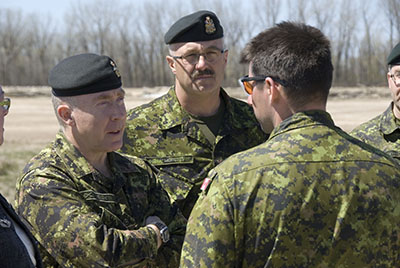
DND photo WA2011-0140-068 by Master Corporal Holly Cowan
The Chief of the Land Staff, Lieutenant-General Peter Devlin (left) and Army Sergeant Major Chief Warrant Officer Giovanni Moretti speak with a soldier working at the Manitoba flood mitigation, 15 May 2011.
In this context, the purpose of command is to provide an individual (the commander) with the authority and capabilities to apply a high degree of independence to ensure necessary action within (generally) predefined parameters to achieve (broadly) proscribed objectives under dynamic conditions involving significant numbers of interdependent teams and high consequences of failure. Based upon these considerations, it is proposed that, conceptually, command is the authority to initiate action; management is the authority to amend action; and leadership is the capacity to influence action. To expand, command involves the principle-based initiation of action through control networks; management involves the rules-based amendment of action through bureaucratic networks; and leadership involves values-based sense making through social networks. Those exercising command, leadership, or management are aided by supporting mechanisms (both social and structural) with: command enablers designed to restrict command effort to what is essential; leadership enablers designed to amplify the effects of leader influence and management enablers designed to optimize managerial effort.26
Based upon these supporting mechanisms, the Commander can concentrate on a narrow(er) domain of key activities and rely upon the four broad sets of enablers to act as substitutes for command attention or multipliers of command effect. These four are: command decision processes; leadership; culture and management enablers. Using Quinn and the CF Effectiveness Framework, command gives priority to mission accomplishment with both leadership and cultural enablers that concurrently attend to individual commitment and member wellbeing. When incorporated within command, management gives priority to internal integration and the focus on efficiency through bureaucratic control, while leadership gives priority to member well-being and the focus on generating effort to achieve (command-directed) mission objectives. Thus, one can talk about command-related management and command-related leadership as specific forms of management and leadership that are used when command is also being exercised.
Of importance, command can function the way it does precisely because command is embedded within the broader context of institutional effectiveness. It is because others outside the command domain (strategic [military] staff in higher headquarters and strategic [political] decision makers) attend to the other two Quinn quadrants (balancing requisite consistency, bureaucracy, and standardization under Internal Integration with requisite flexibility, creativity, and disruption to the status quo under External Adaptability). Thus, it must be understood that the nature of leadership and management outside the command domain is different (more expansive) than within.
This discussion of command has highlighted that it is a unique military function created to overcome the delays created by the ‘checks and balances’ of bureaucratic management with, importantly, a fusion of significant authority and responsibility in the position of the commander. Despite the huge potential for commanders to be overloaded with demanding decision making in the context of uncertainty, turbulence, and high risk, those charged with exercising command can do so effectively be relying upon a number of command enablers, which include competent, motivated staff.
To return to the focus of this article, this command staff most definitely does and should include the most senior non-commissioned members working for the commander. However, in articulating an expanded role and greater responsibilities for senior NCMs, the reference to a command team in the CWO Model publication has created the potential to undermine current doctrine and law. The label used, and some of the text presented in this publication, can give the impression that command responsibilities can or should be shared between the commander and CWO. The understanding that command authority and responsibility rests solely with the appointed commander should remain an inviolate tenet of military effectiveness. Under current doctrine, command cannot be shared, nor can it be delegated. While ‘unity of effort’ can be used to describe the requirements to work horizontally to harness the capacities resident in other units, or even other departments, this does not displace the requirement for ‘unity of command.’ Further, the ‘chain of command’ represents a very clear hierarchy of nested command responsibilities, with each subordinate commander given clear authorities through formal appointment. Failure to retain these principles can lead to the notion expressed elsewhere that the commander commands the officers, and the senior NCM commands the troops.27
Resolving the Doctrinal Dilemma
As stated in the introduction, the generalized intent of the CWO Model publication is fully supported. The expansion of the responsibilities of NCMs, and, in particular, those of the most senior CWOs and CPO1s is essential for the CF to meet the challenges faced in the contemporary security environment. The corollary conclusion is that the CF needs to invest in developing NCMs to their fullest potential, which includes expanding the depth and breadth of career learning, including shifting from professional development (PD), to professional military education (PME).28 The challenge, however, is that in articulating this requirement, the description of the command team contradicts Canadian Forces doctrine and Canadian military culture.
One evident (yet difficult) solution is to redefine the basis of command to that of leadership by indicating that command could be based upon legal authority or personal authority.29 Barring a doctrinal rewrite, this conflict can be resolved with a slight rewording of how the command team is to be understood. One option would be to expand the reference to be the ‘commander’s leadership team.’ Thus, rather than suggesting that the command team construct applies at the tactical and operational level, and shifts to being a Senior Leadership Team at the strategic level, it would be better to refer to the Unit Leadership Triad at the tactical level (CO, DCO, RSM; CO, XO, Coxn, and so on); the Operational Commander’s Leadership Team at that level, and the Strategic Leadership Cadre, to represent the collective stewardship responsibilities of all of the General and Flag Officers, and all the senior appointment CWOs/CPO1s.
The second option would be to draw upon the common usage of ‘mission command,’ which is, in fact, a short form of the ‘mission command leadership philosophy.’30 Thus, the CF could use the command team, in short form, with the understanding that this represents the command team leadership philosophy. While this can be endorsed as a phrase that is acceptable in everyday use, there should be a clearly articulated doctrinal basis which defines the command team leadership philosophy, and which describes in detail how command and how leadership in support of command are to be understood and exercised. By doing so, and in implementing the recommendations contained in the CWO Model publication, the CF will be well placed to enable all members of the profession of arms, officers and NCMs, to make the contributions necessary to ensure mission success in the future.
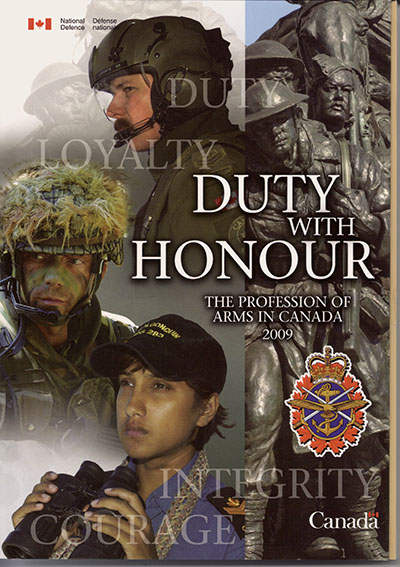
DND
Duty with Honour cover
NOTES
-
Chief of the Defence Staff, Beyond Transformation: The CPO1/CWO Strategic Employment Model (Ottawa: Chief of Force Development, 2012). This quote is from Section 2.4, with italics in the original.
-
S.P. Huntington, The Soldier and the State: The Theory and Politics of Civil-Military Relations. (Cambridge, MA: Belknap Press, 1957),pp. 17-18.
-
Douglas L. Bland, Backbone of the Army: Non-Commissioned Officers in the Future Army. Queen's Policy Studies Series #18. (Montreal: McGill-Queens University Press, 2000).
-
Government of Canada, Shaping the Future of the Canadian Forces: A Strategy for 2020. [Defence Strategy 2020]. (Ottawa: Department of National Defence, 1999).
-
Chief of the Defence Staff, Duty with Honour: The Profession of Arms in Canada. (Ottawa/Kingston: Canadian Forces Leadership Institute, 2003); p 11.
-
Chief of the Defence Staff , Leadership in the Canadian Forces: Conceptual Foundations. (Ottawa: Canadian Forces Leadership Institute, 2005), p. 30.
-
These broader domains are also reflected in the secondary outcomes of CF leader effectiveness which address the profession’s external reputation, and level of external trust, confidence, and support (Conceptual Foundation pp. 19 and 23).
-
See A.C. Okros, “Rethinking Diversity and Security,” iIn Christian Leuprecht (ed), Defending Democracy and Securing Diversity ( London: Routledge, 2010).
-
See A.C. Okros “Becoming an Employer of Choice: Human Resource Challenges within DND and the CF,” in Craig Stone (ed), The Public Management of Defence in Canada. ( Toronto: Breakout Educational Network, 2009.).
-
R.E.Quinn, and J. Rohrbaugh, “A Spatial Model of Effectiveness Criteria: Towards a Competing Values Approach to Organizational Analysis,” in Management Science, Vol. 29 (1983), pp. 363–377.
-
Ross Pigeau, and Carol McCann, “Re-conceptualizing Command and Control,” in Canadian Military Journal, Vol. 3, No. 1, 2000, pp. 53-62.
-
See Ross Pigeau,and Carol McCann, “Redefining Command and Control,” in C. McCann and R. Pigeau (eds.), The Human in Command. (New York, NY: Plenum Publishers, 2000).
-
Canadian Forces Joint Publication Canadian Military Doctrine (CFJP-01), para 0505.
-
The logic behind this statement is contained in CFJP-01 Chapter 5.
-
A.C. Okros, J. Verdon, and P. Chouinard, The Meta Organition: A Research and Conceptual Landscape (DRDC CSS TR 2011-13).( Ottawa: Defence Research and Development Canada – Centre for Security Science, 2011).
-
With a greater emphasis on fiscal prudence than operational effects, as explained in Okros (2009).
-
A simple way of differentiating complicated vs complex environments is that complicated ones contain many variables, complex ones contain many unknowns.
-
A.C. Okros, Leadership in the Canadian Military Context, (CFLI Monograph 2010-01. (Kingston, ON: Canadian Forces Leadership Institute, 2010).
-
This application of the command team concept has been described by some CF and US members of JCSP and NSP as occurring on occasion in the US military.
-
PD can be seen as ensuring a well-practiced response to a predicted situation, while PME allows a well-reasoned response to an unpredicted situation.
-
See R. Pigeau and C. McCann, “What is a Commander?” in B. Horn and S. Harris (eds.), Generalship and the Art of the Admiral, (St. Catharines, ON: Vanwell Press, 2001), pp. 79-104.
-
See A. Pecher, The Erosion of Mission Command Leadership in the 21st Century? - Theoretical Considerations on a Military Leadership Philosophy in Western Societies. Masters of Defence Studies research paper, Royal Military College of Canada, 2008.
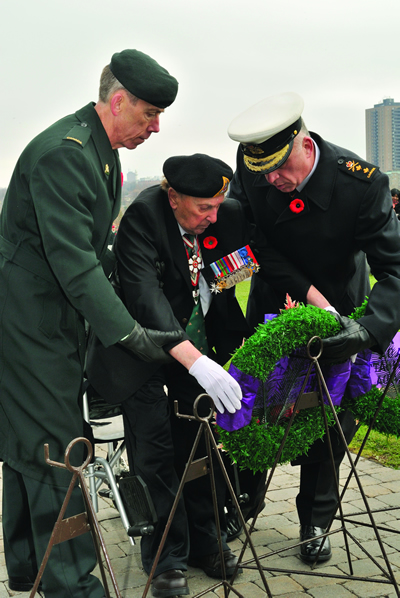
Chief Warrant Officer (CWO) Andy Dalcourt, Chief of Military Personnel (CMP) CWO, Mr. Clifford Chadderton, Second World War Veteran, and Chief Executive Officer of the War Amps, and Rear-Admiral Andrew Smith, CMP, lay a wreath during the 2012 Remembrance Day ceremonies held at the Beechwood National Military Cemetary in Ottawa.







